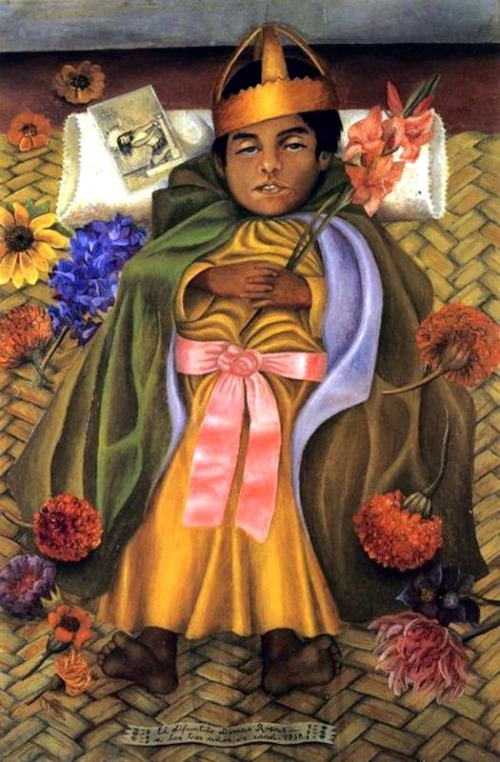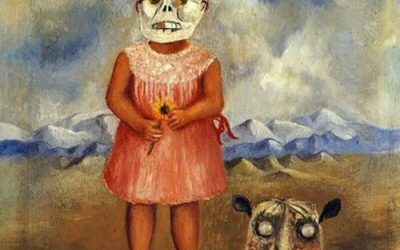
Anyone who has visited the Casa Azul Museum will have noticed that, on Frida’s bed, there is this anonymous work that portrays a dead child, surrounded and crowned with flowers.
It was a tradition in Mexico in the second half of the 19th century to portray the deceased before their burial and, following this custom (which was not so popular by the 1920s), the artist portrayed Delfina’s deceased son, a woman indigenous from Iztapalapa who had been a model for Diego Rivera, who was also the child’s godfather.
The deceased lies on a petate and is surrounded by flowers, including cempasúchil, characteristic of the Day of the Dead. He carries a gladiola in his hands and is richly dressed in the robes of Saint Joseph (in fact, the first title of the work was “Dressed for Paradise”). On the pillow on which his head rests there is a holy card of Jesus and, at the bottom of the painting, you can read “The deceased Dimas Rosas at three years of age, 1937”. The boy has a drop of dried blood under the left corner of his mouth.
What caught my attention the most when seeing the work is the perspective that Frida used, placing the viewer in the position of a mourner leaning over her loved one who has died. It is impossible, from that place, to avoid the eyes of the deceased. Very touching.
The painting was first exhibited at Julien Levi’s gallery in NYC, in 1938, as “Dressed for Paradise.” It was then shown at the Philadelphia Museum of Art, under the title “The Boy King.” However, the owner of the work -upon learning that it represented a dead child- returned it to its author, who put it in the hands of Eduardo Morillo Safa. It is now part of the collection of the Dolores Olmedo Museum (CDMX) and, although it has been outside the country to be exhibited in Europe, it will return to Mexico in May 2019.



